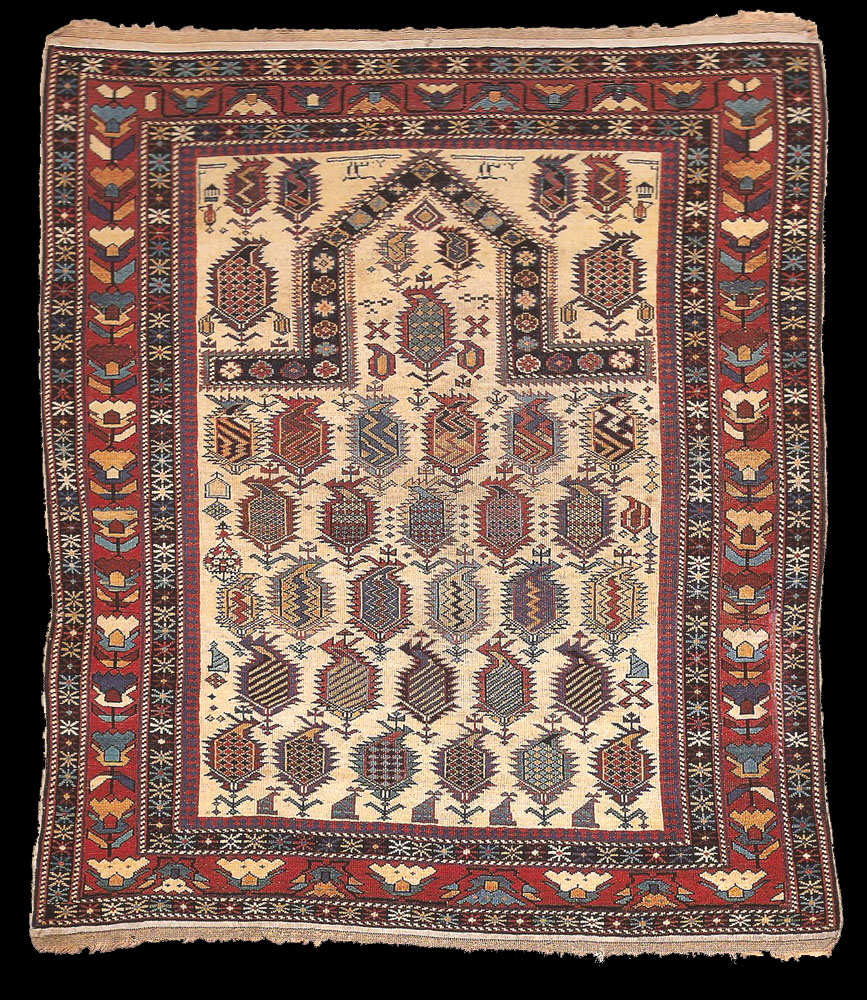|
AH 1307 (1889 AD)
dated antique Shirvan prayer rug,
Azerbaijan, 107 x 125 cm (3'6"x4"1"), published Ralph Kaffel's
Caucasian Prayer rug, plate 84
|
|
Not every boteh rug from the north Caucasus can be automatically assigned to
Marasali. Although this rug was catalogued as Shirvan in the Sotheby's
auction catalogue of 1991, Hali elected to review it as a Marasali,
commenting on its 'good design, generous drawing, but not very inspirational
colour'. This colouring is the very reason why the rug should be assigned to
Shirvan. Colour, as much as design, is a constant of Marasali rugs,
particularly the salmon or 'Marasali red' which gives these rugs their
characteristic fiery glow. This example, however, has the cooler and more
restrained palette of a Shirvan. The 'free floating' boteh on an ivory field
are unusual, as most ivory Marasalis have latticed fields, the former
pattern being a feature of "black" Marasalis. A black Marasali with a
banks-identical to that shown here was offered at Sothebv's in 1981.
 |

